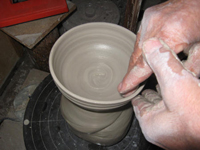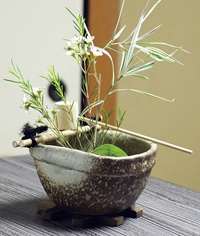Earthenware - Japanese Traditional Culture | Clay
Clay

Clay, called tsuchi in Japanese, dictates the "flavor" of the pot. The Japanese term for this is tsuchi-aji (literally clay flavor). Tsuchi-aji is of crucial importance for unglazed stoneware like Bizen, Shigaraki, and Iga. The chemical composition of the clay gives each ceramic style its own special qualities and characteristics. Minerals like iron and magnesium fuse with the clay to provide different colors and surface textures, and combine with other factors -- like the type of wood used to fire a kiln -- to provide a unique style. Some of these styles are more porous, others are smoother, lending themselves to glazing. Even from within the same region, mountain clay and rice-field clay give rise to different qualities.
1. Clay Extraction and Drying
Most Japanese ceramic styles are named after the region where they were first fired. The clay, too, nearly always comes from the same area (e.g., Shigaraki ware uses Shigaraki clay). Clay is also sold at auctions in Japan, so regardless of where a potter lives, he/she can typically buy clay from any region.
2. Pulverizing and Sifting
The dried clay is broken up into small pieces (by machine) and then put through a sieve to remove impurities and capture only the finer earth. Stones and dirt are discarded. Some potters, however, intentionally leave in small stones to achieve the ishihaze effect.
3. Straining
The clay is next mixed with water, and the resultant mixture is filtered again in order to capture only the finest earth, which is then squeezed to remove the water, and then partially dried.
4. Pugging
Clay is fashioned into a square lump, and put through a pug mill, which shapes it into cylindrical lumps.
5. Wedging
The clay is then wedged by hand to rid it of any air.
Copyright© Earthenware All Rights Reserved.
